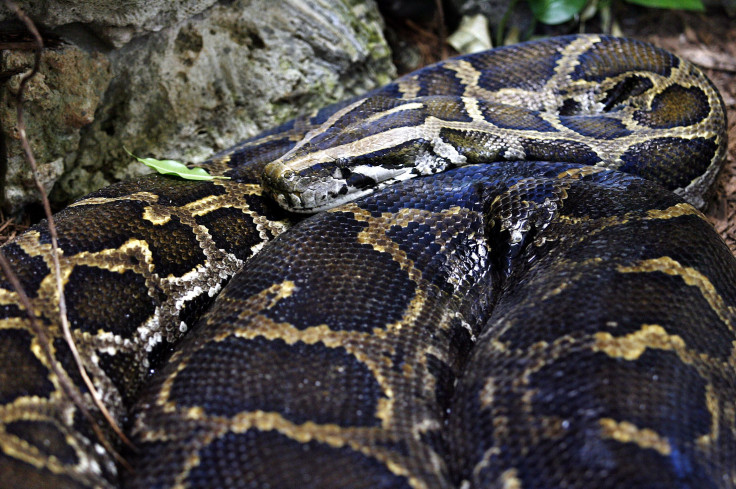How Does A Burmese Python Swallow Prey Bigger Than Itself? Genes Hold Clues, Possible Treatment For Human Ailments

The Burmese python, found in the tropical regions of South and Southeast Asia, can ramp up its metabolism and enlarge its organs to swallow and digest big prey, an ability that, according to an international team of biologists, is linked to the animal’s rapid evolution and the specialized adaptations of its genes.
The researchers said in the study that as snakes contain many of the same genes as other vertebrates, examining the evolution of those genes and how they have produced such extreme traits in snakes can eventually help explain how genomes function and enable extreme feats of organ remodeling.
“One of the fundamental questions of evolutionary biology is how vertebrates with all the same genes display such vastly different characteristics. The Burmese python is a great way to study that because it is so extreme,” Todd Castoe, the study’s lead author and an assistant professor of biology at The University of Texas at Arlington, said in a statement. “We’d like to know how the snake uses genes we all have to do things that no other vertebrates can do.”
According to previous theories, major physical differences among species are caused primarily by changes in gene expression. But, the new python study suggested that various factors, including protein adaptation, gene expression and changes in the structure of the organization of the genome itself, are responsible in determining the unusual characteristics that define snakes, and possibly other vertebrates.
The researchers said that the Burmese python’s physical characteristics represent one of the most extreme examples of evolutionary adaptation. It has an extraordinary ability for “physiological remodeling,” which refers to the process by which pythons are able to digest meals that are much larger than them.
According to researchers, a Burmese python, or Python molurus bivittatus, can increase the mass of its heart, liver, small intestine and kidneys by 35 percent to 150 percent in only 24 hours to 48 hours, and once the animal has digested its prey, the organs return to their original size within a few days. Scientists believe that understanding how these snakes accomplish these feats could hold vital clues for the development of treatments for different types of human diseases.
“The benefits of these discoveries transcends to the treatment of metabolic diseases, ulcers, intestinal malabsorption, Crohn’s disease, cardiac hypertrophy and the loss of organ performance,” Stephen Secor of the University of Alabama and the study's co-author, said in the statement.
The researchers examined 7,442 genes from the python and cobra with gene sequences from other amphibians, reptile, bird and mammals. They used a statistical method to look for genes that had been evolutionarily changed due to natural selection, and found changes in hundreds of genes.
According to the scientists, the results demonstrate that natural selection-driven changes in many genes that encode proteins contributed significantly to the unique characteristics of snakes.
The study is scheduled to be published this week in the Proceedings of the National Academy of Sciences.
© Copyright IBTimes 2024. All rights reserved.






















